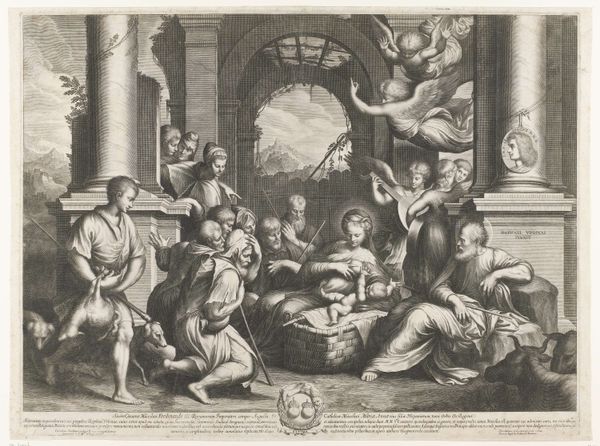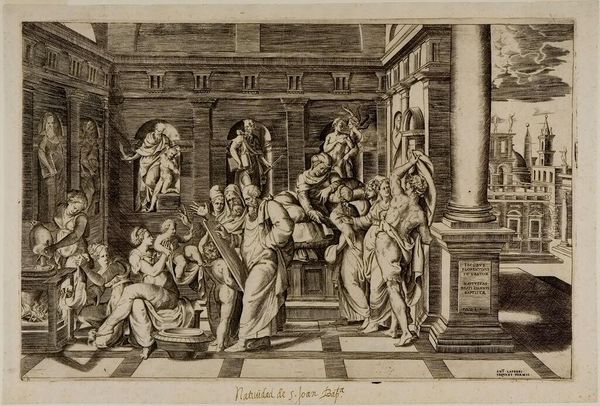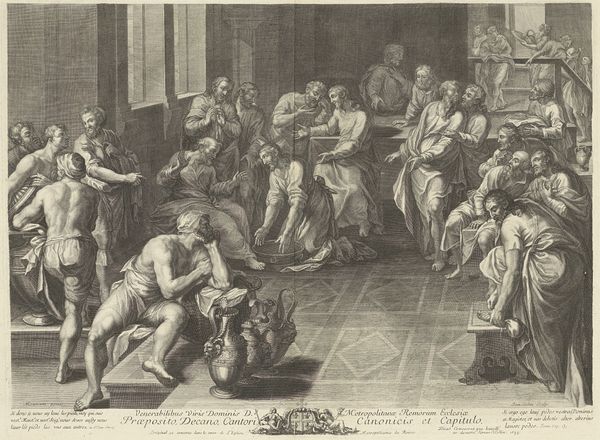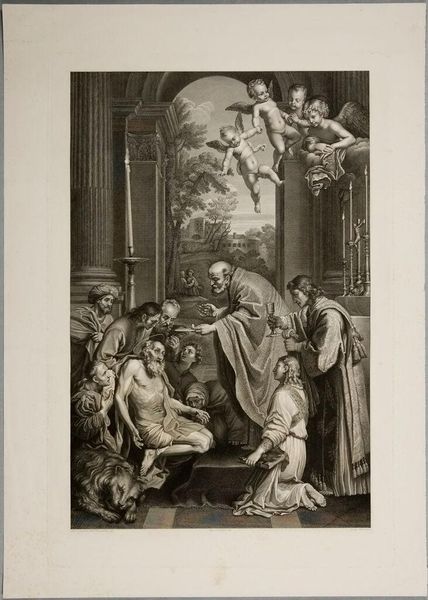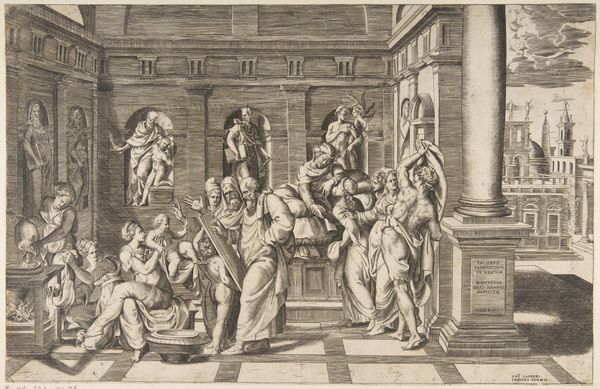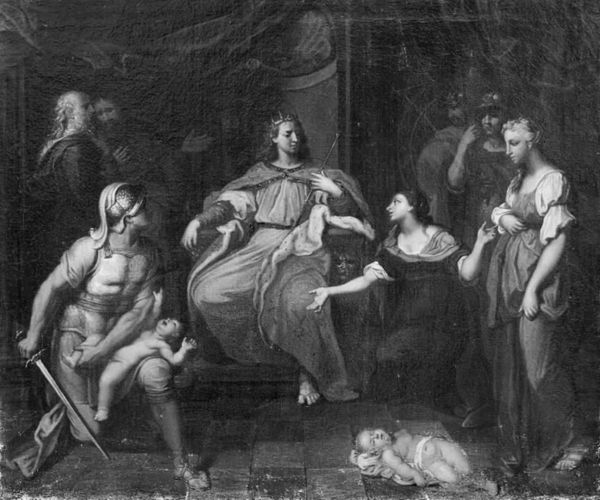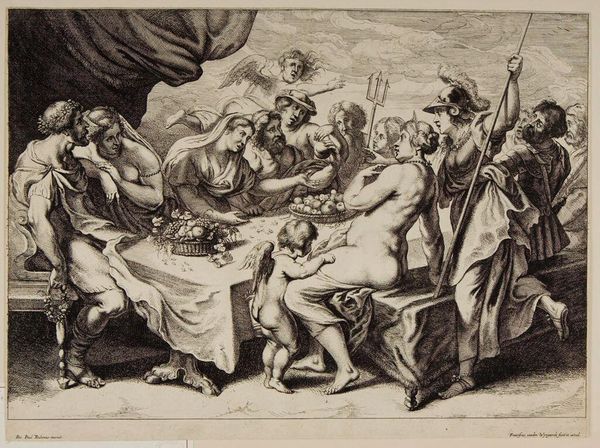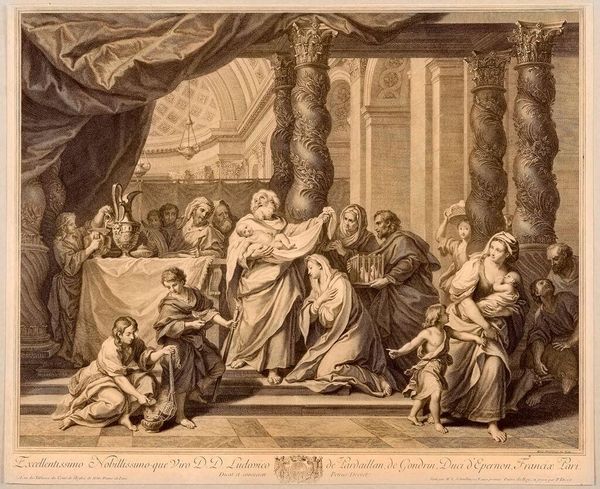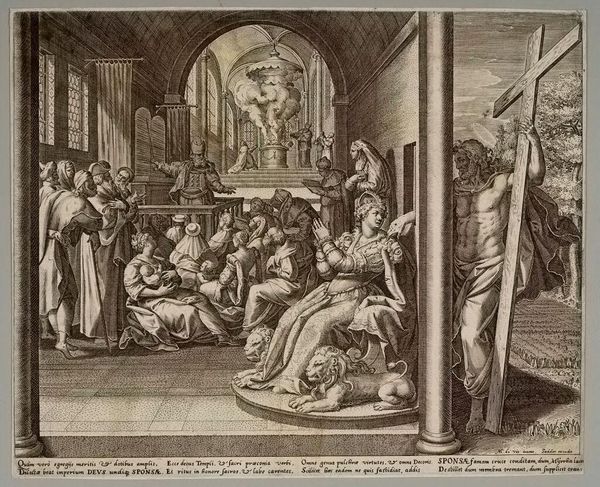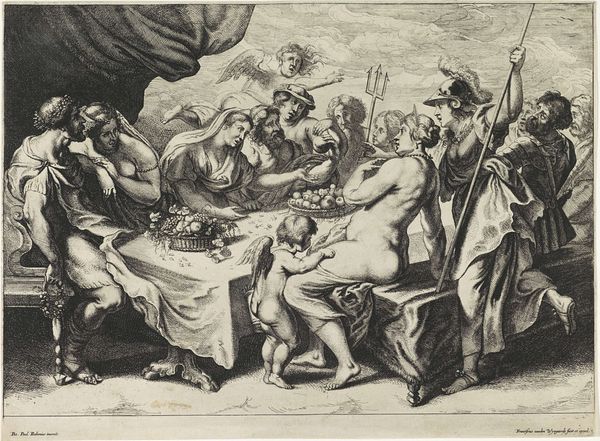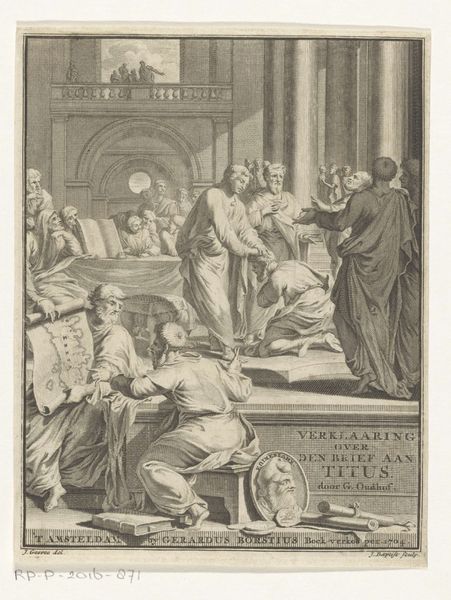
Dimensions: Image: 44 Ã 58 cm (17 5/16 Ã 22 13/16 in.) Plate: 48.5 Ã 60.6 cm (19 1/8 Ã 23 7/8 in.) Sheet: 50.6 Ã 66.5 cm (19 15/16 Ã 26 3/16 in.)
Copyright: CC0 1.0
Curator: Simon François Ravenet the Elder presents “The Death of Seneca,” an engraving depicting the philosopher’s suicide. The scene is quite affecting at first glance, wouldn't you agree? Editor: Yes, dramatically so. You immediately notice the starkness of the composition, the way the figures are grouped so tightly around Seneca, emphasizing his vulnerability. What kind of paper and ink was used to render these fine lines? Curator: The engraving process allows for incredibly precise details. Consider Seneca's extended hand, offering a poignant symbolic gesture. Is he reaching out for knowledge, for solace, or perhaps even for death itself? The act of suicide, in Seneca's time, had complex philosophical implications. Editor: And note the economic implications of such a print! Ravenet likely worked within a larger workshop system, where labor was divided. This image would have been reproduced and distributed widely, making philosophy accessible to a broader audience, a commodity, if you will. Curator: Indeed. The cultural memory of Seneca, a symbol of stoicism, becomes a shared experience through this accessible medium. It's a fascinating intersection of personal tragedy and public consumption. Editor: Ultimately, it makes me consider the tension between the unique artistic labor of the engraver and the mass production of images that this method enabled. Curator: A potent reminder that even in depictions of death, life, in the form of production and circulation, continues.
Comments
No comments
Be the first to comment and join the conversation on the ultimate creative platform.
